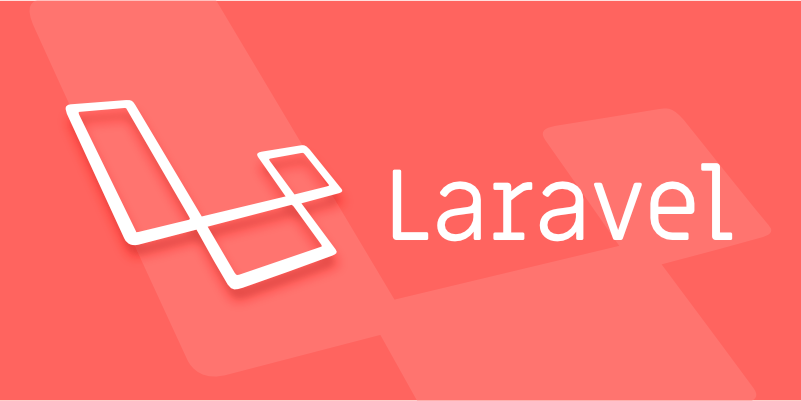Populating databases for development and testing with Laravel
Jul 03, 2025 am 01:31 AMLaravel provides multiple ways to populate databases to support development and testing. 1. Use Seeder to insert fixed test data, suitable for small-scale data sets; 2. Use Factory to generate diverse and realistic data, suitable for simulating large amounts of records; 3. Real data can be exported and desensitized from production environments to discover potential problems. The appropriate method should be selected according to the needs and used reasonably.

When you're working on a Laravel project, having realistic data in your database is cruel for both development and testing. It helps you see how the app behaves under real-world conditions without relying on empty tables or hardcoded values. The good news is Laravel gives you solid tools to do this efficiently.

Using Seeders to Fill Your Database
Laravel's seeder system lets you insert test data directly into your tables. You start by creating a seeder class using php artisan make:seeder . Then, in the run method, you can use Eloquent or the Query Builder to insert records.

For example, if you have a users table, you might write something like:
User::create([
'name' => 'John Doe',
'email' => 'john@example.com',
'password' => bcrypt('secret'),
]);This works fine for small datasets. But if you need more flexibility or volume, consider combining seeders with factories.

Generating Realistic Test Data with Factory
Factoryes are ideal when you want to generate multiple records with vary but realistic-looking data. You define a factory for each model, usually stored in database/factories , and then use it inside seeders or tests.
A basic UserFactory might look like this:
$factory->define(User::class, function (Faker $faker) {
Return [
'name' => $faker->name,
'email' => $faker->unique()->safeEmail,
'password' => bcrypt('password'),
];
});Once set up, you can call it from a seeder like:
User::factory()->count(50)->create();
This creates 50 users with unique names and emails. You can also tweak individual fields or relationships as needed.
Some tips:
- Use
$fakerwisely — it has lots of built-in methods for addresses, phone numbers, dates, etc. - For related models, use
has()orfor()to attach them properly. - Don't overdo it — keep generated data relevant to what you're testing.
Using Real Data from Production (Safely)
Sometimes, you need truly realistic data that reflects actual usage patterns. In those cases, pulling anonymized data from production can be useful.
How to do it:
- Export a subset of your production database.
- Strip out sensitive info (like emails, passwords, personal names).
- Import into your dev environment.
But be careful — live data may include edge cases or inconsistencies that could break your tests if not handled.
Also, always ensure compliance with privacy rules. Never expose user data accidentally.
Wrapping Up
Populating databases in Laravel doesn't have to be tedious. Seeders are great for known, fixed data. Factory help simulate variety. And real-world data from production can uncover hidden issues — as long as it's sanitized.
Use these tools together and you'll have a solid setup for development and testing.
The above is the detailed content of Populating databases for development and testing with Laravel. For more information, please follow other related articles on the PHP Chinese website!

Hot AI Tools

Undress AI Tool
Undress images for free

Undresser.AI Undress
AI-powered app for creating realistic nude photos

AI Clothes Remover
Online AI tool for removing clothes from photos.

Clothoff.io
AI clothes remover

Video Face Swap
Swap faces in any video effortlessly with our completely free AI face swap tool!

Hot Article

Hot Tools

Notepad++7.3.1
Easy-to-use and free code editor

SublimeText3 Chinese version
Chinese version, very easy to use

Zend Studio 13.0.1
Powerful PHP integrated development environment

Dreamweaver CS6
Visual web development tools

SublimeText3 Mac version
God-level code editing software (SublimeText3)
 How to set environment variables in PHP environment Description of adding PHP running environment variables
Jul 25, 2025 pm 08:33 PM
How to set environment variables in PHP environment Description of adding PHP running environment variables
Jul 25, 2025 pm 08:33 PM
There are three main ways to set environment variables in PHP: 1. Global configuration through php.ini; 2. Passed through a web server (such as SetEnv of Apache or fastcgi_param of Nginx); 3. Use putenv() function in PHP scripts. Among them, php.ini is suitable for global and infrequently changing configurations, web server configuration is suitable for scenarios that need to be isolated, and putenv() is suitable for temporary variables. Persistence policies include configuration files (such as php.ini or web server configuration), .env files are loaded with dotenv library, and dynamic injection of variables in CI/CD processes. Security management sensitive information should be avoided hard-coded, and it is recommended to use.en
 What is Configuration Caching in Laravel?
Jul 27, 2025 am 03:54 AM
What is Configuration Caching in Laravel?
Jul 27, 2025 am 03:54 AM
Laravel's configuration cache improves performance by merging all configuration files into a single cache file. Enabling configuration cache in a production environment can reduce I/O operations and file parsing on each request, thereby speeding up configuration loading; 1. It should be enabled when the application is deployed, the configuration is stable and no frequent changes are required; 2. After enabling, modify the configuration, you need to re-run phpartisanconfig:cache to take effect; 3. Avoid using dynamic logic or closures that depend on runtime conditions in the configuration file; 4. When troubleshooting problems, you should first clear the cache, check the .env variables and re-cache.
 How to make PHP container support automatic construction? Continuously integrated CI configuration method of PHP environment
Jul 25, 2025 pm 08:54 PM
How to make PHP container support automatic construction? Continuously integrated CI configuration method of PHP environment
Jul 25, 2025 pm 08:54 PM
To enable PHP containers to support automatic construction, the core lies in configuring the continuous integration (CI) process. 1. Use Dockerfile to define the PHP environment, including basic image, extension installation, dependency management and permission settings; 2. Configure CI/CD tools such as GitLabCI, and define the build, test and deployment stages through the .gitlab-ci.yml file to achieve automatic construction, testing and deployment; 3. Integrate test frameworks such as PHPUnit to ensure that tests are automatically run after code changes; 4. Use automated deployment strategies such as Kubernetes to define deployment configuration through the deployment.yaml file; 5. Optimize Dockerfile and adopt multi-stage construction
 Explain Laravel Eloquent Scopes.
Jul 26, 2025 am 07:22 AM
Explain Laravel Eloquent Scopes.
Jul 26, 2025 am 07:22 AM
Laravel's EloquentScopes is a tool that encapsulates common query logic, divided into local scope and global scope. 1. The local scope is defined with a method starting with scope and needs to be called explicitly, such as Post::published(); 2. The global scope is automatically applied to all queries, often used for soft deletion or multi-tenant systems, and the Scope interface needs to be implemented and registered in the model; 3. The scope can be equipped with parameters, such as filtering articles by year or month, and corresponding parameters are passed in when calling; 4. Pay attention to naming specifications, chain calls, temporary disabling and combination expansion when using to improve code clarity and reusability.
 PHP development user permission management monetization PHP permission control and role management
Jul 25, 2025 pm 06:51 PM
PHP development user permission management monetization PHP permission control and role management
Jul 25, 2025 pm 06:51 PM
User permission management is the core mechanism for realizing product monetization in PHP development. It separates users, roles and permissions through a role-based access control (RBAC) model to achieve flexible permission allocation and management. The specific steps include: 1. Design three tables of users, roles, and permissions and two intermediate tables of user_roles and role_permissions; 2. Implement permission checking methods in the code such as $user->can('edit_post'); 3. Use cache to improve performance; 4. Use permission control to realize product function layering and differentiated services, thereby supporting membership system and pricing strategies; 5. Avoid the permission granularity is too coarse or too fine, and use "investment"
 How to build a log management system with PHP PHP log collection and analysis tool
Jul 25, 2025 pm 08:48 PM
How to build a log management system with PHP PHP log collection and analysis tool
Jul 25, 2025 pm 08:48 PM
Select logging method: In the early stage, you can use the built-in error_log() for PHP. After the project is expanded, be sure to switch to mature libraries such as Monolog, support multiple handlers and log levels, and ensure that the log contains timestamps, levels, file line numbers and error details; 2. Design storage structure: A small amount of logs can be stored in files, and if there is a large number of logs, select a database if there is a large number of analysis. Use MySQL/PostgreSQL to structured data. Elasticsearch Kibana is recommended for semi-structured/unstructured. At the same time, it is formulated for backup and regular cleaning strategies; 3. Development and analysis interface: It should have search, filtering, aggregation, and visualization functions. It can be directly integrated into Kibana, or use the PHP framework chart library to develop self-development, focusing on the simplicity and ease of interface.
 How to create a helper file in Laravel?
Jul 26, 2025 am 08:58 AM
How to create a helper file in Laravel?
Jul 26, 2025 am 08:58 AM
Createahelpers.phpfileinapp/HelperswithcustomfunctionslikeformatPrice,isActiveRoute,andisAdmin.2.Addthefiletothe"files"sectionofcomposer.jsonunderautoload.3.Runcomposerdump-autoloadtomakethefunctionsgloballyavailable.4.Usethehelperfunctions
 Optimizing Database Interactions in a Java Application
Jul 27, 2025 am 02:32 AM
Optimizing Database Interactions in a Java Application
Jul 27, 2025 am 02:32 AM
UseconnectionpoolingwithHikariCPtoreusedatabaseconnectionsandreduceoverhead.2.UsePreparedStatementtopreventSQLinjectionandimprovequeryperformance.3.Fetchonlyrequireddatabyselectingspecificcolumnsandapplyingfiltersandpagination.4.Usebatchoperationstor






